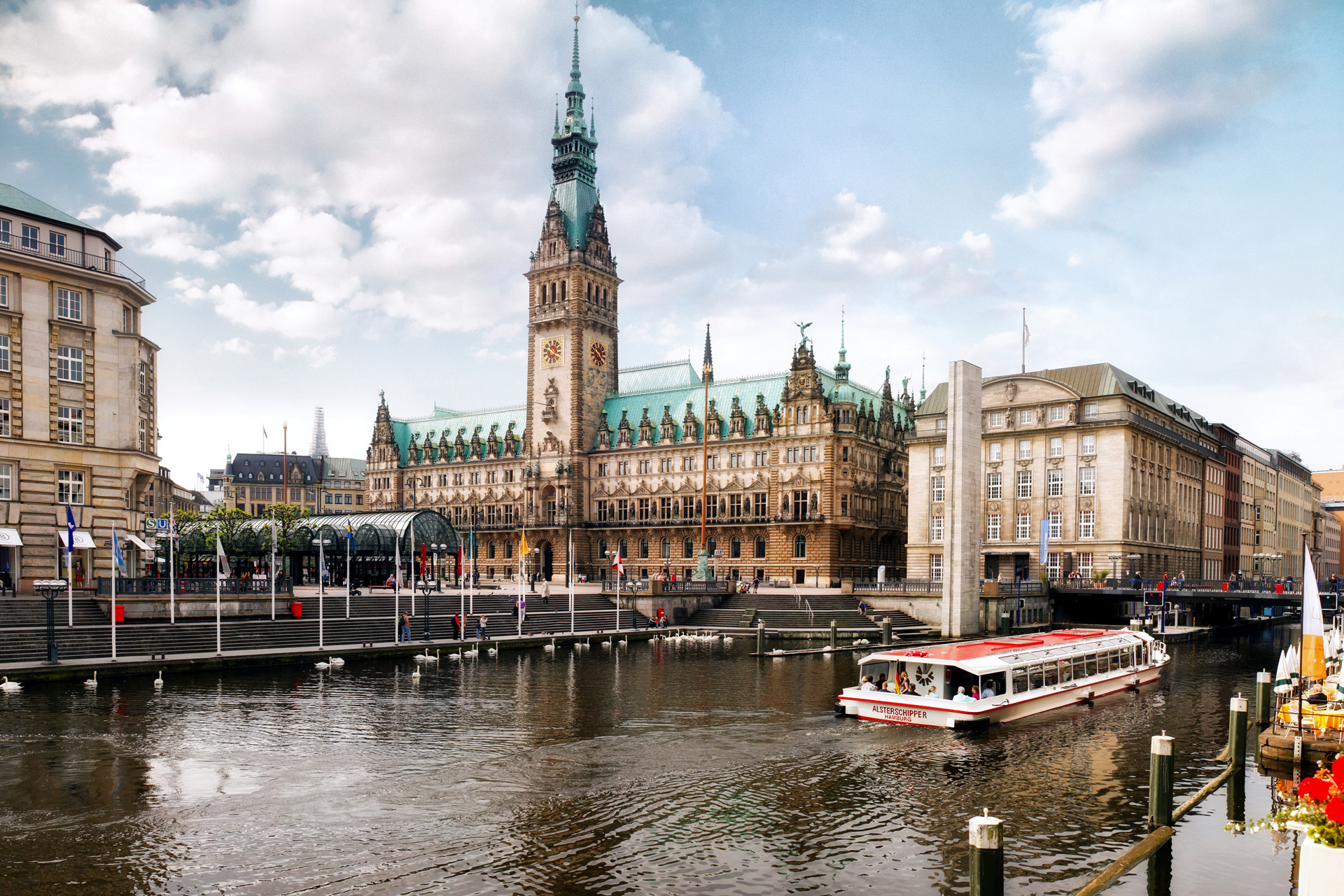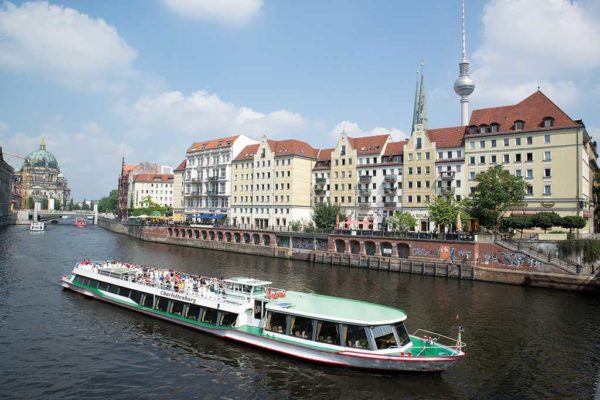The Ultimate Guide To Hamburg
By
2 years ago
Anwer Bati explores Germany’s second largest city

Germany’s second largest city (and a state in its own right), cosmopolitan Hamburg is one of the most important ports in Europe, straddling the river Elbe on its way to the North Sea. It’s also home to some of the wealthiest people in the country, and much of the German media. And, thanks to longstanding trade and the fact that it was in the British zone after World War II, it is probably the most Anglophile place in Germany. But, despite being an ideal weekend destination, it’s not high on the wish list of British travellers – which is a shame as it offers everything you could want: good hotels, history, culture, a lively food scene and plenty to see and do.
Read the C&TH Guide to Responsible Tourism
Travel Guide: Hamburg, Germany

Photo by Moritz Lüdtke on Unsplash
Where To Stay
Hamburg has a huge range of hotels to choose from, including luxury addresses such as the classic Atlantic, and the modern Westin and Fontenay, both architecturally striking. But for a balance of price and central location, with decent public transport links, the Scandic Hamburg Emporio is a pretty good bet.
A modern, Swedish-owned hotel with 340 rooms – one of the few high rise buildings in the city – the Scandic reflects Hamburg’s close link with the Nordic countries in both geography and ambience. Both comfortable and well-run, it has a strong commitment to sustainability, with water a design theme running through the hotel – even in the lifts where the blue lighting gets brighter as you go up, rather as it might in the sea. The well-lit rooms, with floor-to ceiling windows and pale wood fittings, offer coffee machines, free minibars and very comfortable beds. Go for those on the top two floors, the Art Rooms, appropriately decorated with paintings and murals by German artists, some with good views of the city.
They allow you access to the peaceful airport lounge style Living Room, offering free breakfast as well as complimentary drinks and snacks until early evening. However, the excellent buffet in the main restaurant is rather more extensive. The lively lobby bar next door has outside tables in good weather. And there is a gym, sauna and bikes free to use.
BOOK IT: Double room with breakfast from £122 per night. scandichotels.com
Where To Eat
Hamburg has all the culinary choice you would expect of a major city with extensive international connections going back centuries. But the city’s own cuisine is particularly shaped by its location: not only featuring fish (eel is popular) and seafood from the North Sea, and local meat and dairy produce, but also strongly influenced by nearby Scandinavia. And, of course, hearty German dishes including sausages are everywhere.
Hamburg’s own comfort food is labskaus, a hash made of salted beef, potatoes, beetroot, gherkins and usually topped with fried egg. Not pretty, but very tasty.

Fish market and harbour
Fish sandwiches (fischbröten) are a staple, and Brücke 10, on one of the docks on the Elbe facing the massive Blohm + Voss shipyard, is a local favourite with a splendid view of life in the harbour from inside or outside tables. It’s a simple place with a white painted wood interior, low prices and delicious fish fresh from the market – best enjoyed with a glass of local beer.
Very much at the other end of the spectrum is Fischereihafen a little further along the harbour. Run by the Kowalke family since 1981, Hamburg’s smartest fish restaurant has welcomed any number of celebrities, including King Charles (when he visited with Diana). They come not only for the finest fish, but also for the magnificent views from the coveted window tables, along with impeccable service and a classic ambience.
Freshness is something of an obsession at Hobenköök, where top chef Thomas Sampl runs an enticing food market and a packed restaurant featuring regional and seasonal produce from 200 suppliers in the Hamburg area.
And at Heimatjuwel, where chef Marcel Görke’s motto is ‘why go far, because the good things grow so close’, expect seasonal, locally sourced, painstakingly prepared dishes – with a strong emphasis on vegetables – in simple, rustic surroundings.

The Alster
It’s a very different atmosphere at 100/200 in a cavernous loft-style space in a former factory by the Elbe, though the dedication to seasonal local produce (the menu changes four times a year) is the same. Chef Thomas Imbusch and partner Sophie Lehmann named their two Michelin-star restaurant after their Molteni stove, set to cook a gastronomic ‘nose to tail’ four course set menu at between 100 or 200 degrees and visible in the open kitchen with raw materials on display.
It’s a contrast again at cheap, cheerful, small and very popular Deich Jungs, near the main station, the place to go for soups and stews freshly made to old family recipes.

Elbphilharmonie
Things To Do
Hamburg is dominated by water: not only the Elbe but its tributary, the Alster, which forms a lake in the centre of the city. They are attractions in their own right. A harbour boat trip is well worth it: taking in some of the city’s most important areas, including the shipping docks, and the newly developed Hafencity district with its gleaming landmark the Elbphilharmonie concert hall (designed by starchitects Herzog & De Meuron) at one end, and the affluent Ovelgönne and Blankenese neighbourhoods with their small beaches at the other.
You can also take a variety of boat trips on the Alster, passing by a pretty park, yacht clubs, some of Hamburg’s best hotels, and the opulent houses of some of Germany’s most prosperous people. Hop-on-hop-off tour buses are another good way of getting a feel for the city, going past the magnificent ornate Rathaus, or town hall, the Speicherstadt area, the world’s biggest warehouse district; and the notorious Reeperbahn red light area, now being gentrified.

Speicherstadt warehouses
The UNESCO listed red brick Speicherstadt warehouses, dating from the late 19th Century, surrounded by canals, were bombed during the war, like much of the dock area, but were later restored. Some of them now house Hamburg’s most popular museums, including the Coffee Museum, celebrating one of the many commodities imported by the city; and Miniatur Wunderland, Hamburg’s top attraction, where your inner child (or indeed actual children) can marvel at the six miles of model railway, roads, landscapes and even an airport. Nearby is Chocoversum, where you can learn all about chocolate and make your own bar.
Hamburg’s public transport system is excellent (there is a clean, efficient metro) and it’s well worth getting a Hamburg Card to use it free and get many discounts on entry to attractions. If you use the Uber app, you can also book regular city taxis with it.
Where To Shop
Hamburg’s prime shopping area, with department and high street shops is roughly between the main station (Hauptbahnhof) and the Rathaus, with more traditional and characterful shops clustered near the latter, and some of the smartest as you walk towards the lake. Other parts of Hamburg, such as Markstrasse in the Karolinen district, and Susannenstrasse in the Schanzen area are the places to find small boutiques and specialist shops. Grosse Elbstrasse in the fish market area (and the place for fish restaurants) features interior shops such as Stilwerk.
There are also several food markets such as the covered Rindermarkthalle in the St Pauli area, and Isemarkt, Germany’s longest, sheltered under an elevated train line.

Isemarkt
BOOK IT
Several airlines – including British Airways, EasyJet, Ryanair and Lufthansa – fly direct to Hamburg, normally taking only around 90 minutes to get there.






